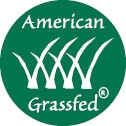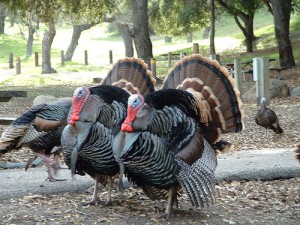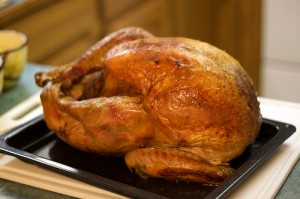With Thanksgiving just around the corner it is time to start thinking about where that big ol’ bird is going to come from. It would seem to be a simple task-pick out a turkey for dinner- but the labels on meat products make it overwhelming and confusing: natural, organic, free range, grassfed- to name a few. What do these terms really mean? Here are some definitions that can help you decide which turkey and other meat products to choose for you and your family.
USDA Organic
If a meat product has a USDA Organic stamp on the label it means the farm where the animal was raised followed the standards of the United States Department of Agriculture’s (USDA) National Organic Program [3]. The livestock must be raised from birth organically-without antibiotics or synthetic growth hormones added to their 100% organic, vegetarian, pesticide and herbicide-free, non-GMO feed. The animals must also be allowed access to the outdoors. Unfortunately the USDA doesn’t have a detailed definition of “access” and this could mean a variety of things.
Kosher
The meat was prepared according to Jewish dietary laws. Salt is added as part of the koshering process.
Hormone Free
Hormones are not allowed in raising hogs or poultry. So this label won’t be seen on poultry or pork unless it is followed by a statement that says “Federal regulations prohibit the use of hormones.”
The “no hormones” label can be used on beef if it is shown that hormones were not administered.
Antibiotic Free
The livestock hasn’t been treated with ANY antibiotics. This has to be verified by the USDA.
Free-range
The livestock has access to the outdoors most of the year. As in organic meats-what does “access” really mean? Also-just because an animal has access doesn’t mean they actually go outside.
Chemical Free
This term is not allowed to be used on a label.
Natural
According to the USDA “natural” indicates a product containing no artificial ingredient or added color and is only minimally processed. The label must explain the use of the term natural (such as – no added colorings or artificial ingredients; minimally processed.) It does not prohibit growth-promoting hormones or antibiotics.
Grassfed
 [5]The USDA’s definition of grassfed says that the animals diet has to be a 100 percent foraged diet. However, it does not say where that forage has to be fed. It also doesn’t address the use of hormones or antibiotics. Along came the American Grassfed Association [6] and they took the USDA definition and added stricter guidelines which say the animals are not to be confined and are will not be treated with antibiotics throughout their lifetime. You can find the AGA logo on meat that adheres to these strict guidelines.
[5]The USDA’s definition of grassfed says that the animals diet has to be a 100 percent foraged diet. However, it does not say where that forage has to be fed. It also doesn’t address the use of hormones or antibiotics. Along came the American Grassfed Association [6] and they took the USDA definition and added stricter guidelines which say the animals are not to be confined and are will not be treated with antibiotics throughout their lifetime. You can find the AGA logo on meat that adheres to these strict guidelines.
Food for thought: issues with “access to the outdoors” in the meat industry
If a meat product is labeled as free-range or free-roaming, organic or grassfed, the livestock is required to have access to the outdoors. However, this does not mean that the animal actually went outdoors. The farmer is obligated to leave the door to the coop or barn open briefly each day. Not all farmers take the requirement this literally -but there is a risk that the animal you are eating didn’t breath the outdoor air, even if it is labeled free-range or organic. Not a very humane way to treat animals. Is this enough to make you a vegetarian?
Now you can pick out your Turkey Day turkey with a little extra knowledge. Another option-Tofurkey [7]. Have you tried one?
More to come on fish labels…..wild v. farm raised
Want to learn more about meat labels?
- USDA Fact Sheet on Food Labeling
- Meat Labels: What Do They Really Mean? [8]
- For the Mindful Omnivore: A Conversation With The American Grassfed Association [9]
- Grass-Fed Basics [10]


